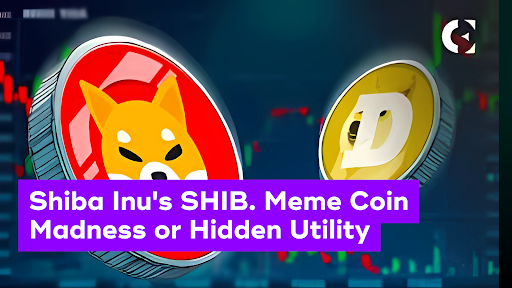SHIB: Meme Royalty or Market Distraction?
Shiba Inu wasn’t supposed to last. It launched in 2020 as a joke—another meme coin chasing Dogecoin’s tail. And yet, here we are. SHIB’s trading at $0.000028 with a $16.5 billion market cap (as of June 5, 2025). That’s no accident. It’s still one of the most talked-about assets in retail crypto. But here’s the uncomfortable truth: it’s down 65% from its peak, and the shine is starting to wear off.
X is loud with #SHIBArmy posts, but look closer. Daily volume is $1.2 billion, trailing Dogecoin. Shibarium, SHIB’s layer-2 answer to Ethereum’s gas nightmare, barely cracks 10,000 daily users. The question’s simple: is SHIB evolving, or are we all just hanging on to the past?
A Meme Coin With Muscle—But Not Much Structure
There’s no denying SHIB’s reach. The community? Massive. Millions strong across Telegram, X, Discord. It’s more movement than token, and that kind of loyalty matters in crypto. Half the original supply is already burned. Scarcity is the new narrative.
Shibarium, launched in 2023, helps. It cuts gas fees to near-zero and hosts apps like ShibaSwap, which still holds $50M in TVL. Brands have taken notice—Gucci dropped NFTs, Welly’s slapped SHIB branding on its burger joints. This isn’t just about memes anymore. It’s about cultural cachet.
But SHIB isn’t built like the rest of DeFi. It’s propped up by sentiment, not utility. Price movements are driven by social waves. One TikTok post can pump it 20%, but a dull week? Down she goes. And Shibarium’s numbers? They’re soft. 10K daily users won’t cut it against giants like Polygon or Arbitrum. Security issues don’t help—last year’s $1.7M exploit left a mark.
Still, people love the idea. SHIB isn’t supposed to be Ethereum. It’s a symbol. A collective bet on community over code.
Numbers Don’t Lie—But They Don’t Shout Either
| Coin | Market Cap | 24h Volume | What’s the Story? |
| SHIB | $16.5B | $1.2B | Viral, but fading |
| DOGE | $23B | $2B | Accepted at stores |
| PEPE | $4B | $800M | New kid, big bark |
Glassnode says 80% of SHIB volume is retail-driven—no surprise there. 1.2 million unique wallets is nothing to scoff at. But only 5% hold more than a billion tokens, which means whales still run the game.
Shibarium processes 2 million transactions a day—solid, but nowhere near Polygon’s 7 million. And despite token burns totaling 5 trillion SHIB annually, supply remains sky-high at 589 trillion. Inflation’s slowing, not disappearing.
In short: SHIB’s huge, but still top-heavy. Active? Yes. Groundbreaking? Not yet.
Where Does It Go From Here?
SHIB’s path forward hinges on whether it can grow beyond the meme. Gaming integrations are rumored—Unity might be in the mix. If that hits, SHIB could shift from passive speculation to active engagement.
CoinPriceForecast sees $0.000048 by 2026 if adoption picks up. But there’s risk everywhere. Another exploit, a memecoin regulation wave (India’s 2024 crackdown already rattled nerves), or even a trend pivot to something like PEPE—and this thing could unravel.
Retail moves fast. Loyalty fades. One week you’re the movement. Next week, you’re the memory.
Final Take: A Coin With Soul, But Not Much Structure
SHIB has heart. That’s clear. Its community built an empire out of a joke—and that matters in a space where belief moves markets.
But belief only gets you so far. If Shibarium can’t scale, and if new use cases don’t emerge fast, SHIB may struggle to justify its valuation. You can only ride the wave so long before it crashes.
Still, SHIB isn’t done. It’s scrappy. It’s loud. It refuses to die.
The real question: can it finally do more than just survive?

Steve Gregory is a lawyer in the United States who specializes in licensing for cryptocurrency companies and products. Steve began his career as an attorney in 2015 but made the switch to working in cryptocurrency full time shortly after joining the original team at Gemini Trust Company, an early cryptocurrency exchange based in New York City. Steve then joined CEX.io and was able to launch their regulated US-based cryptocurrency. Steve then went on to become the CEO at currency.com when he ran for four years and was able to lead currency.com to being fully acquired in 2025.


